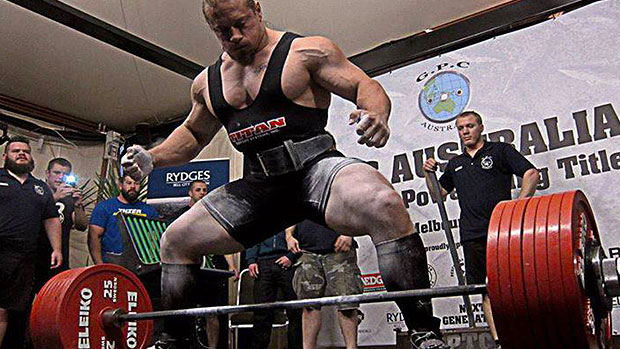Already doing pull-ups? Great! Want some fresh challenges? Even better. These variations were responsible for the best gains I've made to my biceps, forearms, and delts. Give them a shot!
This variation can be done a number of ways. You can do it as shown or do it by simply tossing the V-handle used for seated rows over the top of a bar. Alternate sides each rep. Work on grip strength and bump up forearm flexor demand by using a fat grip attachment.
Instead of doing straight sets, try to accumulate volume. Just shoot for a certain number of total reps per pull-up session, however many sets it takes. Some rough guidelines:
- Beginner: 15-20 total reps
- Intermediate: 20-30 total reps
- Advanced: 30-40 total reps
This variation places a considerable amount of stress on the forearms and biceps. You'll get a massive biceps pump. It also just feels empowering. Being able to hold onto a thick rope and knock out 5-6 good reps just feels awesome.
If your gym doesn't have a thick rope available, just order one from Amazon and drape it over a bar. It's a worthy investment and you can use it for other moves like inverted rows.
Again, we're going to accumulate total reps:
- Beginner: 20-25 total reps
- Intermediate: 30-35 total reps
- Advanced: 40-45 total reps
This advanced variation adds extra time under tension on each rep. You'll need to be a pull-up ninja already before tackling this one.
For programming, this one works better with traditional straight sets: 4-5 sets of 5-6 reps. Recover fully between sets. Pull up, move to the right, then to the left, and back down. That's one rep.
This one was popularized by Charles Poliquin. After eight weeks of performing this routine once a week, I had people commenting on my arm growth and accusing me of being on the sauce.
First, you'll need to be able to perform at least 10 strict, dead-hang pull-ups. Any less than that you'll be better served using another cluster set method that doesn't induce as much fatigue.
Here's how it works:
- Do pronated (hands facing away from you), shoulder-width pull-ups. Stop 2-3 reps short of failure. Rest 10 seconds.
- After the 10 seconds of rest, move your hands in (4-6 inches apart) and perform pronated, close-grip pull-ups. Again, stop a couple of reps shy of failure. Rest 10 seconds.
- Now switch your hands into a supinated position (hands facing you) and use a shoulder-width grip. Stop just short of failure and rest 10 seconds.
- Finally, move to the close-grip supinated position and perform reps to just short of failure.
- Rest 3 minutes and do the whole cycle again.
- After 4 weeks, perform the full cycle 3 times.
I know what you're thinking: You're already way to swole to be using a sissy band to help with your pull-ups. Well, think again.
The goal here for advanced lifters is to really ramp up the reps. Shoot for 3-5 sets of 15-plus reps to build up strength-endurance and jack up your arms and lats.
Get to Work!
Adding variety to a monster movement like a pull-up is a surefire way to improve strength and add slabs of muscle to your upper body.
You'll also improve your grip strength (and forearm size) which will invariably transfer to other aspects of your training.





